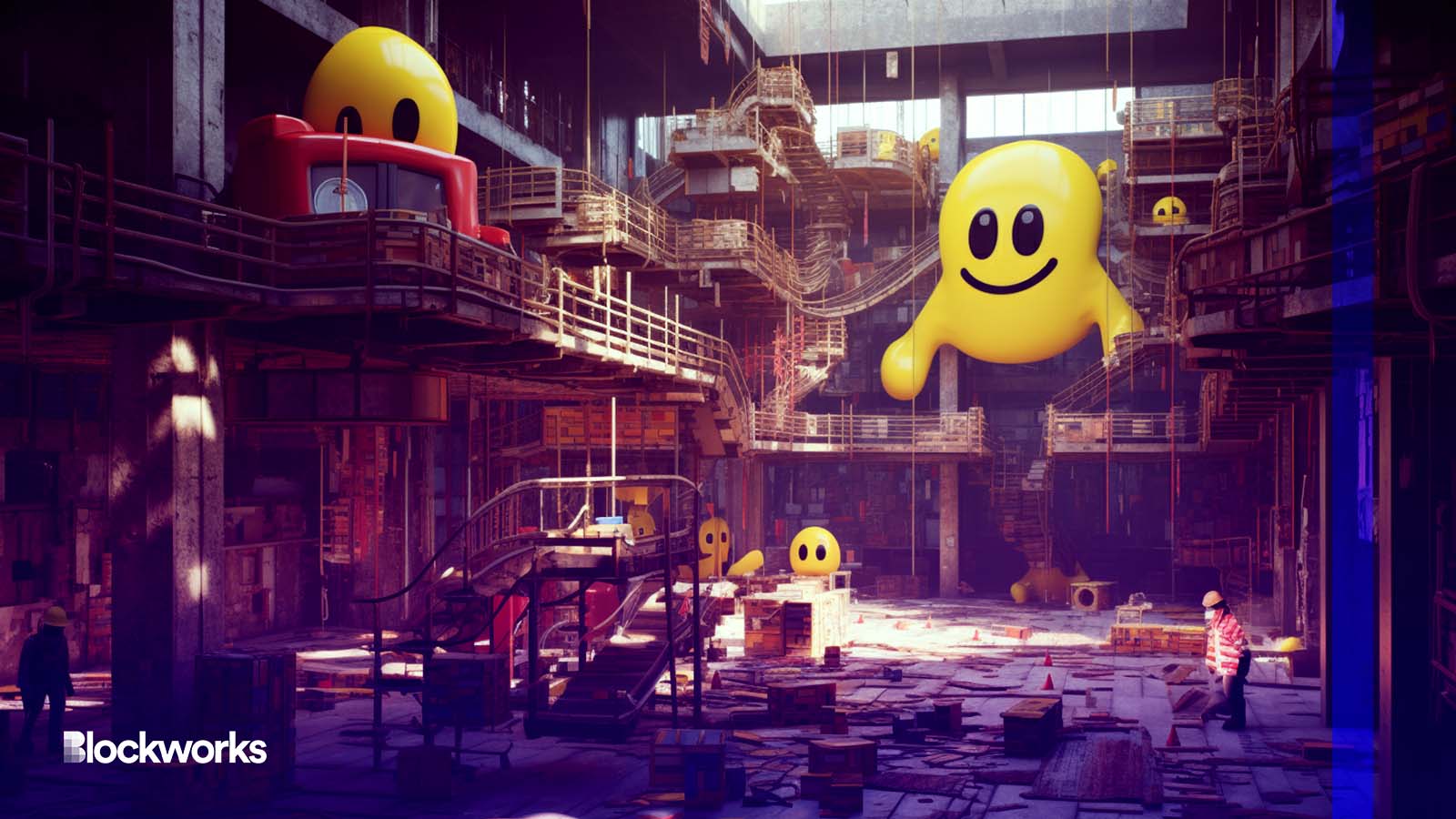The secret weapon in the battle of Web3 games isn’t that secret at all: Good infrastructure
There’s no reason to overthink building a new Web3 game: Just make sure you have solid infrastructure, and the rest will fall in line

Midjourney modified by Blockworks
Axie Infinity used to be the star of the show.
After play-to-earn games burst onto the scene last year, this virtual world of NFT monsters had within just a few months accumulated thousands of players — many in the developing world.
But Axie’s novelty soon wore off, and not long after that, questions arose about the fairness of the play-to-earn (P2E) economic model. The result? An across-the-board plunge in token prices.
A healthier Web3 gaming industry has risen from the ashes.
With a shift away from attracting players solely interested in earning money and toward those seeking fun, the space has entered a new growth phase with the entry of well-established studios and millions in new capital.
In this next phase of evolution, games like Axie have lost their first-mover advantage and are being judged on their merits instead. In other words, playtime is over. Web3 gaming studios need to take new competition seriously, or risk fading out.
And the most important weapon in this war? Infrastructure.
The battle has begun – but who’s winning?
We’ve already seen Web3 studios stepping up their game.
In the early P2E boom, the average Web3 game had a very rudimentary build that took just a few months to produce — a fraction of the time it takes to develop a Web2 release. In fact, many games were so primitive and simplistic that they became fodder for jokes in Web2 gaming communities. Still, the fact that they were first on the scene kept players playing.
Things are different now. The average Web3 game today has a much longer production cycle that includes user testing: a change that has resulted in games with user experience (UX), mechanics and accessibility closer to the quality that the Web2 gamer crowd has come to expect (and is, therefore, more likely to play).
This means that Web3 game studios are now competing for a larger, more diverse group of players than ever before. The games that rose to popularity during the early P2E days primarily attracted people who wanted to earn money. And while this group is certainly still a part of the mix, the industry is anticipating a much larger influx of users who will play Web3 games just because they’re fun — with the earning possibilities as an added bonus.
The studios that manage to attract these players will be the most successful in the long run. But what are the ingredients that will ensure that success?
Offering better gameplay and greater accessibility is critical to victory in this evolving battle. But to achieve this, Web3 games first need scalable infrastructure that can support more advanced games and expanding player numbers.
First movers, move over
In the past, Web3’s gaming infrastructure was neither equipped to support either the building of high-quality games, nor a rapidly expanding user base.
In fact, the over-reliance on blockchain has been a hindrance to growth in gaming, making it hard to scale individual games, let alone studios’ multi-game offerings.
Early games prioritized keeping everything on-chain, which often made it difficult for Web3 newbies to even start playing in the first place. And because of the all-too-familiar blockchain trilemma, games that were fully on-chain couldn’t be at once secure, scalable and decentralized — a problem that curtailed their growth and evolution.
Read more from our opinion section: It’s way too soon for a marriage of AI and Web3
On top of that, the first-mover games — like Axie Infinity — have been dominant for so long it’s impossible to tell whether their support for other builders is because these newcomers are skilled and innovative, or because of Axie’s preference for supporting known associates. And because many smaller, newer game devs and studios may not have had the financial resources to make their visions reality, innovation may be happening at a slower rate than necessary.
Plug and play is on the rise
Despite these obstacles, effective Web3 gaming infrastructure is here.
Gaming ecosystems — platforms that devs can easily build for and plug into — are on the rise. These ecosystems are equipped with identification, payment and development components that give devs a head start building games, and make it easier for players to play them.
The existence of this kind of infrastructure effectively levels the playing field for smaller devs and studios, meaning that innovation can happen faster.
This is why now, more than ever, the right infrastructure is so important — and why Web3 studios that are taking growth seriously need it to win.
If we want to build high-quality games that can compete for Web2 players, it’s time for Web3 to step up its game. Good infrastructure is the way forward.
Get the news in your inbox. Explore Blockworks newsletters:
- The Breakdown: Decoding crypto and the markets. Daily.
- 0xResearch: Alpha in your inbox. Think like an analyst.






